emilehermans.com
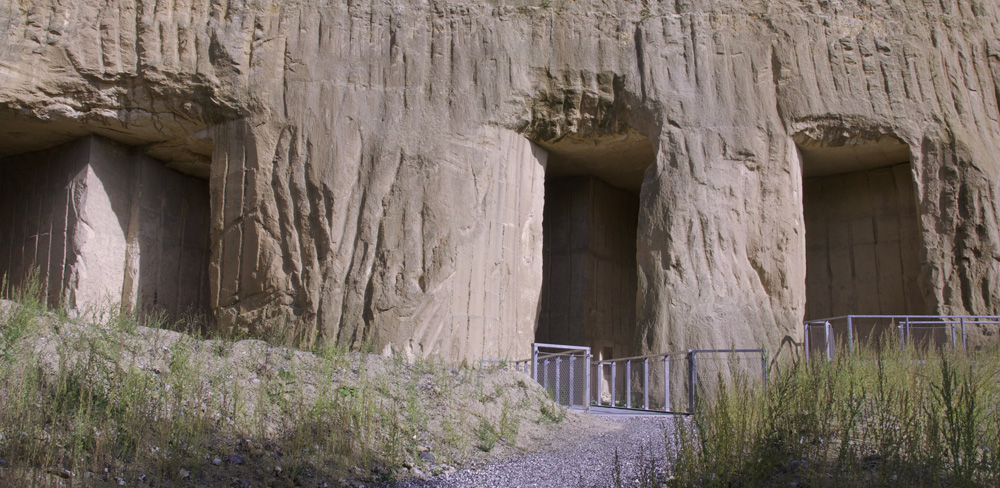
About 15,000 years ago, an anonymous hand performed a remarkably
systematic movement and drew four lines onto a cold stone surface,
creating the first non-organic shape: a square. The exact purpose of
this pure idea, embodied in four hesitant strokes, remains speculative
– as does the reason behind the rest of the prehistoric legacy that we,
quite one-sidedly, have labelled as cave art.
systematic movement and drew four lines onto a cold stone surface,
creating the first non-organic shape: a square. The exact purpose of
this pure idea, embodied in four hesitant strokes, remains speculative
– as does the reason behind the rest of the prehistoric legacy that we,
quite one-sidedly, have labelled as cave art.
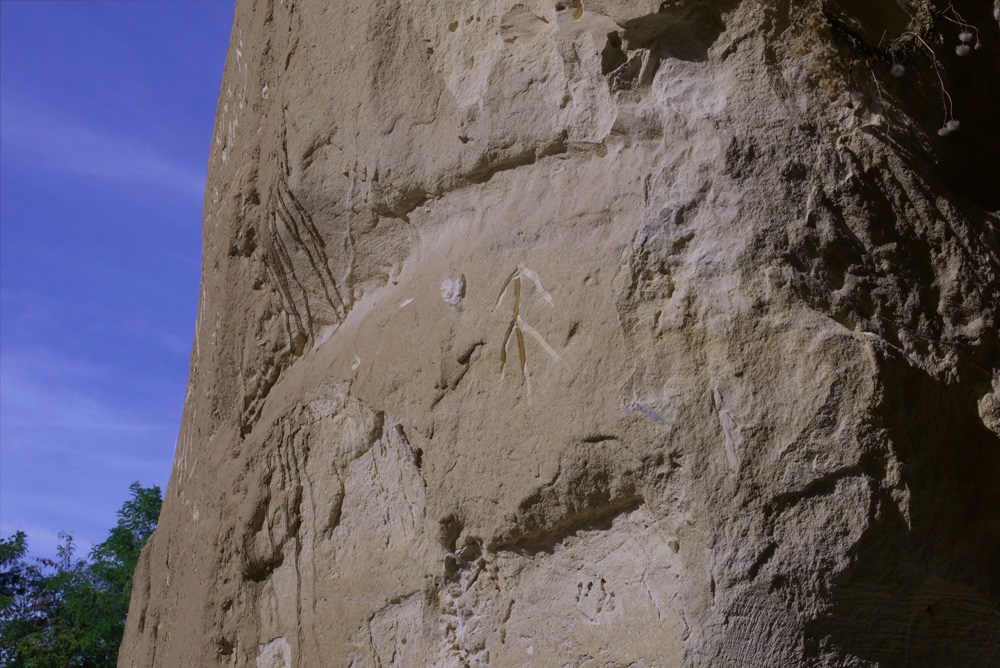
Regardless of that dispute, we can see an actual beginning of time,
when humans started associating the concept of temporality with
spatiality and set out to leave marks.
when humans started associating the concept of temporality with
spatiality and set out to leave marks.
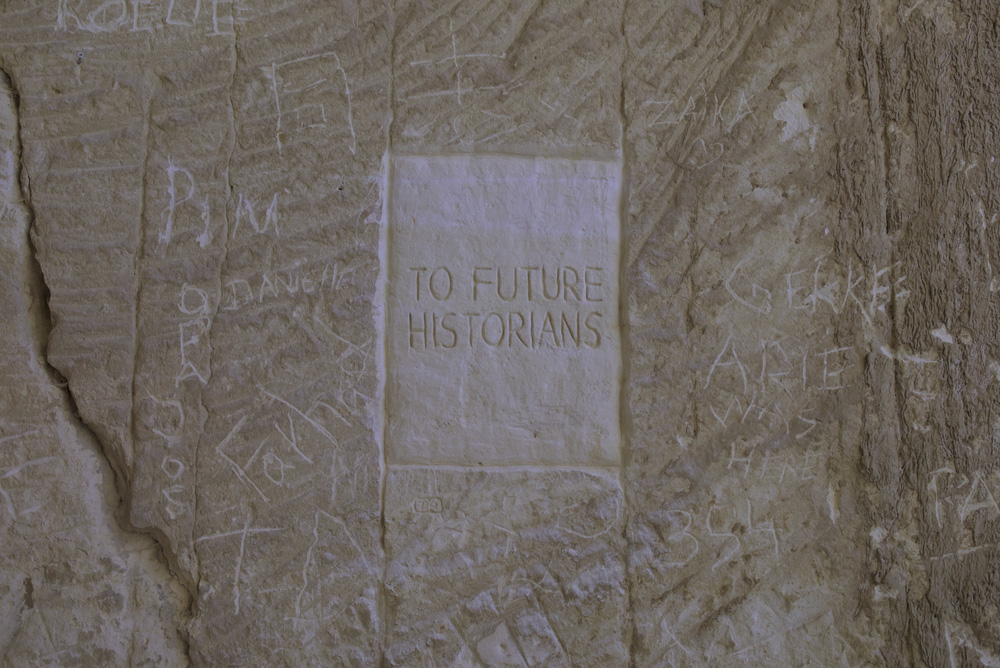
This acknowledgment of our relative position in time is one of the
forces driving the project 'to future historians'. Set in this unique
environment of the ENCI quarry, which itself stands for the passing
of time as reflected by the accumulation of geological material,
the project bridges para-archeological and artistic practice.
forces driving the project 'to future historians'. Set in this unique
environment of the ENCI quarry, which itself stands for the passing
of time as reflected by the accumulation of geological material,
the project bridges para-archeological and artistic practice.
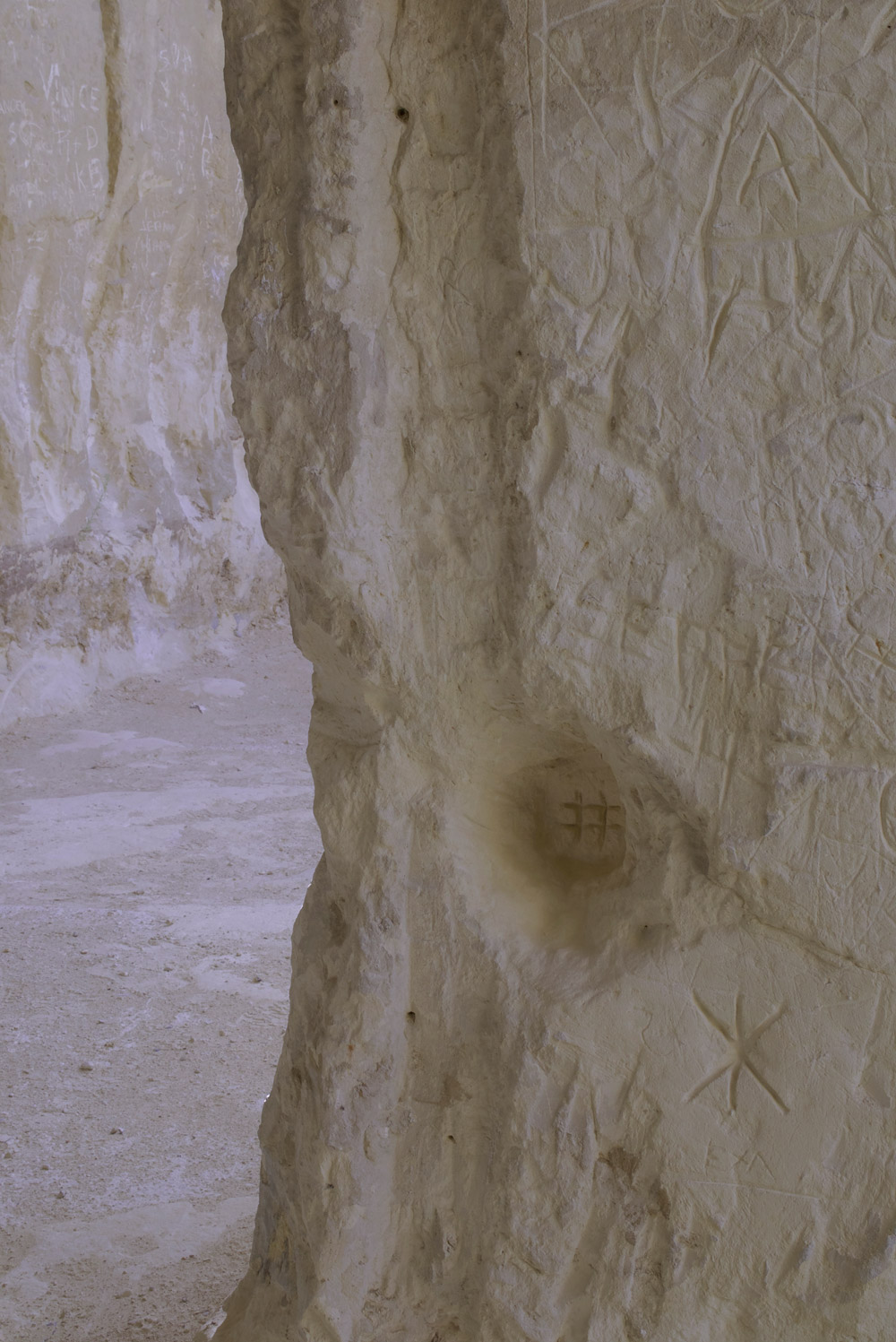
The hand-outlines and pictographs found in the caves have their
continuation in contemporary graffiti tags found in urban spaces,
represented in Maastricht by the abundance of engravings in limestone.
The inscriptions found on built structures all over the city, have
been brought back to their site of origin – the ENCI quarry – and
copied onto the surfaces created through the extraction of the
limestone blocks. Those carved out monumental hallways comprise a
bizarre system of negative-architecture. It is then no wonder that
this particular aura of the historical quarry seduced also Belgian
artist and amateur of archaeology Robert Garcet (1912–2001) who in
the 70’s announced his discovery of remnants of an ancient underground
culture he named the 'Thebah'.
continuation in contemporary graffiti tags found in urban spaces,
represented in Maastricht by the abundance of engravings in limestone.
The inscriptions found on built structures all over the city, have
been brought back to their site of origin – the ENCI quarry – and
copied onto the surfaces created through the extraction of the
limestone blocks. Those carved out monumental hallways comprise a
bizarre system of negative-architecture. It is then no wonder that
this particular aura of the historical quarry seduced also Belgian
artist and amateur of archaeology Robert Garcet (1912–2001) who in
the 70’s announced his discovery of remnants of an ancient underground
culture he named the 'Thebah'.
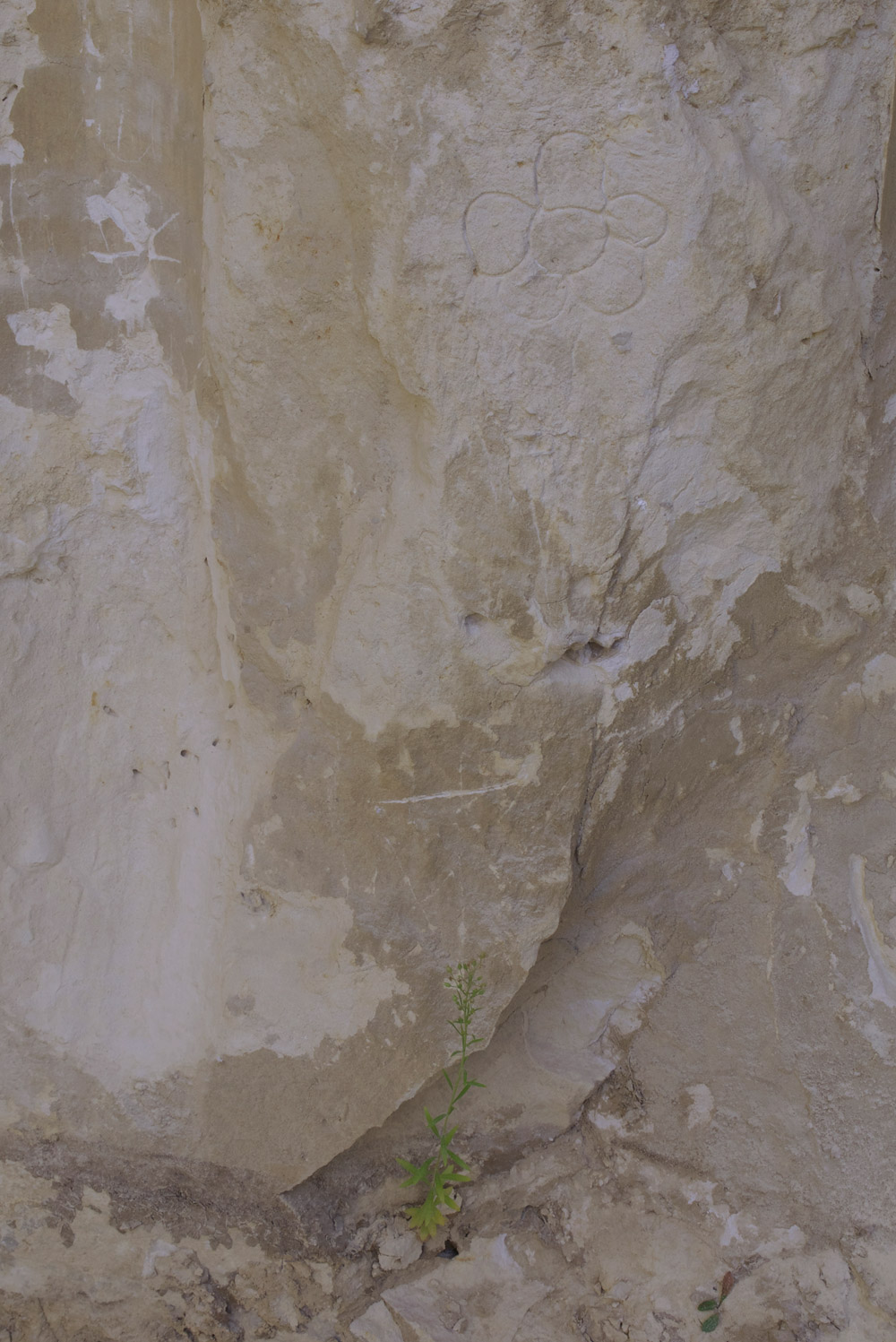
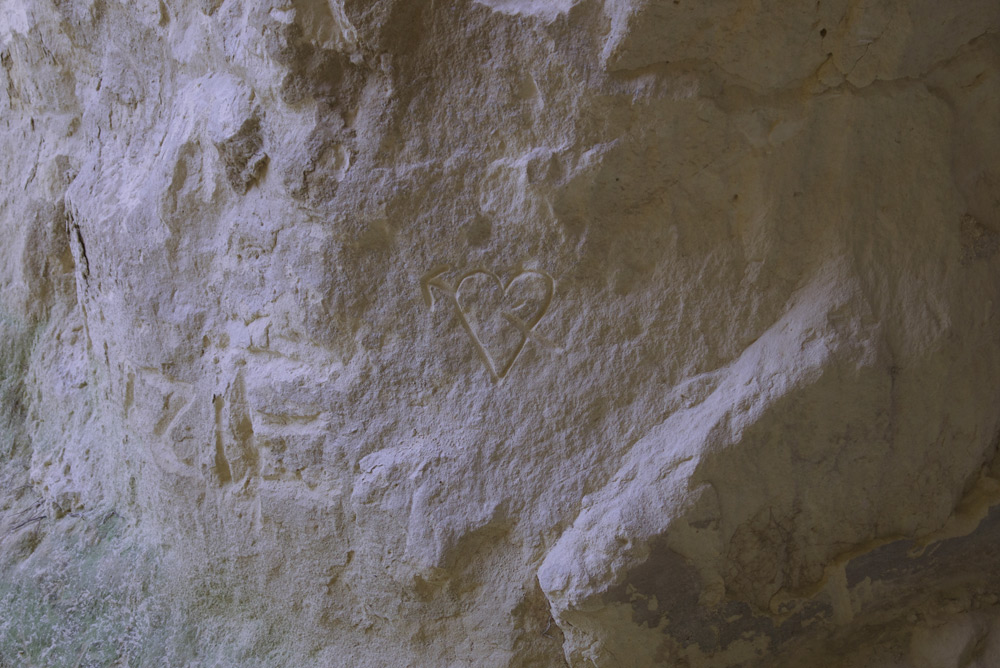
Next to the displaced inscriptions, the walls have also been covered
with several symbols dating back to pre-Ice Age. These engravings
started to blend in with the existing ones, creating an amalgamate of
signs, creating a universal, intrinsic language, testifying about what
is important for us, becoming a message to future historians.
with several symbols dating back to pre-Ice Age. These engravings
started to blend in with the existing ones, creating an amalgamate of
signs, creating a universal, intrinsic language, testifying about what
is important for us, becoming a message to future historians.
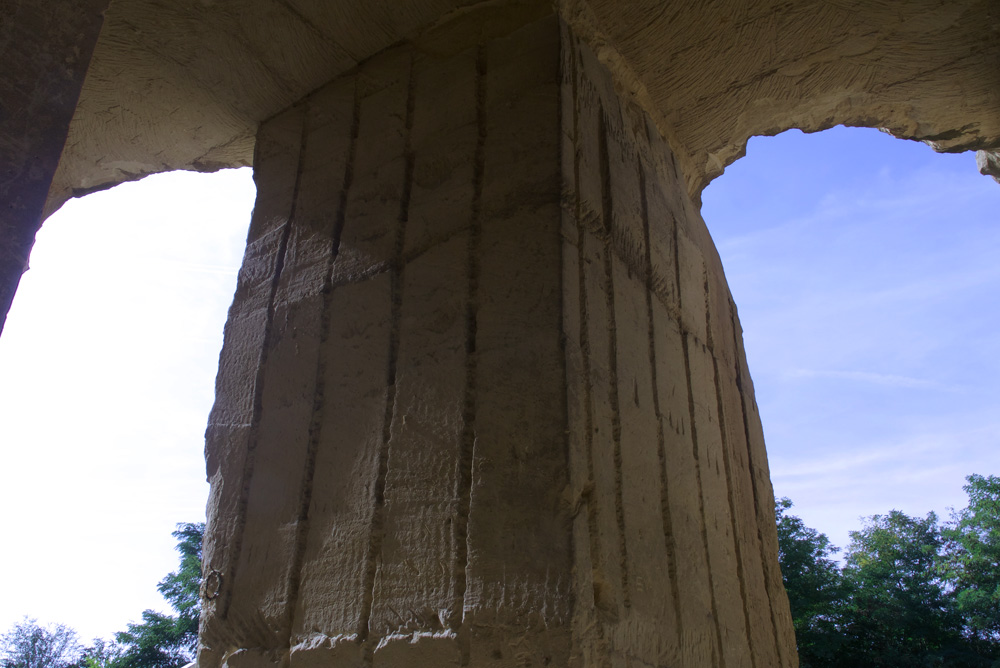
engravings in limestone | measurements variable | intervention - 2017